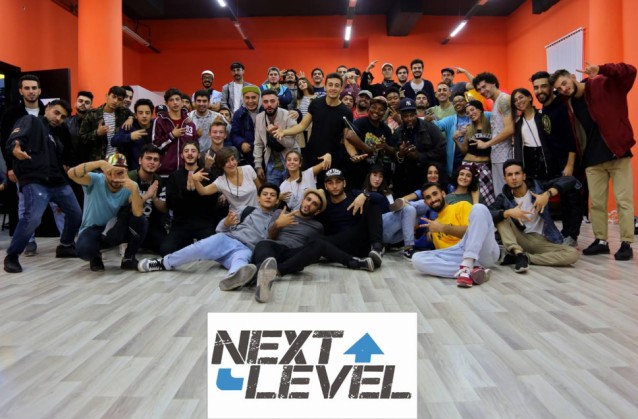I should start with a confession: my interest in hip hop is purely mercenary. Once in a streak of motivation, I hijacked a few break dance moves from YouTube videos and incorporated them into my fitness routine. They look ridiculous, and I only attempt them behind closed doors, usually when there is no mirror available.
But I admire people who can actually do the moves, so my interest was piqued when I heard about a Hip Hop program in Baku this month. The program is part of Next Level (a joint project of the US Department of State, University of North Carolina at Chapel Hill, and Meridian International Center in the US). The US Embassy in Baku is facilitating the program with the help of some Baku contacts like Aziz Azizli, President of the Azerbaijan Social and Modern Dance Association, who has been at the centre of the hip hop scene in Baku since the 1990s. (Who knew?)
It’s all underground, Aziz says when I ask why I’ve never heard of hip hop in Baku before. He explains that several street dance groups and studios have been developing the dance genre for years, but it’s hard to make money doing hip hop here, so most of them limit their break dancing activities and make themselves viable by spending the rest of their efforts teaching traditional dance lessons. Harmony Dance Studio near 28 May, where I’ve come to observe Next Level workshops, is one of the few that has managed to major in “social dance” like hip hop and Zumba.
When I walk into Harmony Dance Studio, I’m not at all sure what to expect. What I find are three workshops taking place in dance practice rooms lined wall-to-wall with mirrors (these kids are braver than I am).
The classes are diverse. One room is dominated by a handful of strutting young rappers with their microphones held high, spitting out lyrics straight toward the mirror in three languages. One sits in the back of the room scribbling in a notebook.
The next room spins with 20 dancers all practicing movements in small groups. Some of them are doing flowing motions that make my eyes think their arms have three extra joints; others are defying gravity with flips that freeze mid-air. Akim “Funk Buddha” Ndlovu, their American instructor, tells me he has grouped them to represent elements of earth, water, wind and fire and is now “cooking” them together.
The third room contains a tight huddle of beatboxers on low stools around a single speaker and loop pedal, bobbing their heads in unison and passing a microphone around to whichever one is making the most interesting sound at the moment, as far as I can tell. They feed off one another and progressively add layers to their looping mix until the room is filled with a jungle-like cacophony of clicks and whistles. This is the only room where the participants are not oriented to the mirror, because they don’t need it: they are auditory mirrors for each other.
In the quiet of the break room, Jaci Caprice Clark, site manager for the Next Level team, gives me the rundown on the project. The first matter on the agenda for me is a basic education in hip hop. (Don’t worry if you’re not part of the “in crowd” on this. Two days ago I, too, was a plebeian who thought hip hop was just a music and dance genre.) It turns out hip hop is an entire cultural movement including defined elements like MCing (that’s rapping to the rest of us) and its accompaniment, beatboxing; DJing (“scratching” with turntables); graffiti art; breakdancing (properly called “breaking”); and street fashion.
Hip hop originated in the United States in the 1970s during urban block parties. It has always been coloured with a touch of rebellion and unchained youthful intensity. I had the misconception that hip hop was a media to express angst and violence, but Jaci clues me in that it has another, more positive story. Of course there’s the narrative of there being a time of unrest and hip hop coming out of conflict, but there’s another story where it has a stronger root. That’s what we focus on—what are the positive things that connect us? Indeed, a little research quickly unearths hip hop’s early history, when it was used to bring street groups together and give them an alternative form of expression besides violence.
Hip hop is more than an outlet for troubled teenagers to purge their negative feelings. It’s a chance to collaborate creatively with others and to turn a gritty story into a piece of visual or musical art. Next Level’s goal is to empower Azerbaijani youth to create something positive through hip hop. Jaci adds, everybody comes into the space with a story. How do we use that to contribute to the whole? Let’s come together with our storylines and create something from nothing.
To that end, Next Level has brought a team of four artists to Baku for two weeks to run workshops with Azerbaijani youth. The visiting artists include a beatboxer, dancer, graffiti artist and MC who all have impressive credentials, like works on display in the San Francisco Museum of Modern Art and performances in the Lincoln Center. After these masters have imparted their mojo into lucky local participants, they will all work together to prepare a final stage performance incorporating break dancing, beatboxing, rap, graffiti and more.
The end-of-program show will take place on October 27 in Baku (see our “What’s On” announcement for details) and Oct 28 in Mingachevir. Come see what the team has created. (Their Facebook page has dropped some tantalizing footage of hip hop with an Azerbaijani flavor, like kamancha-accompanied rapping, and there are rumours of lezginka vs breakdance battles.) However, as Jaci puts it, it’s not about the big show. It’s about what we have learned from each other.

